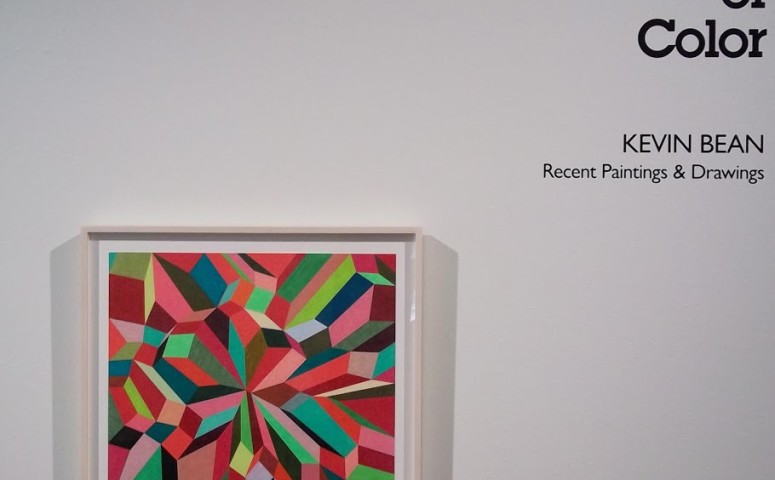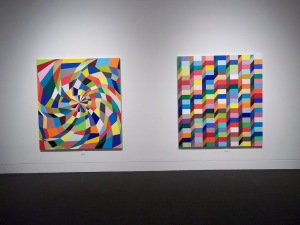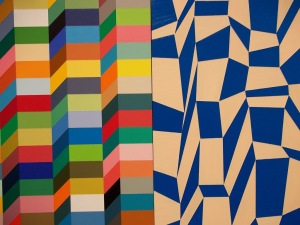My friend John van Duyl introduced me to the work of Kevin Bean, a local painter who taught at Stanford and has exhibited at the Charles Campbell and John Berggruen galleries. Bean’s work is often contradictory. His earlier figurative work felt incredibly personal, but the faces were erased. Throughout his career, he has changed the subject of his paintings; he is restless, but the work remains calm, studied. Recently his work shifted from figurative to semi-abstract. But the pieces in this most recent show at the Thomas Welton Stanford Art Gallery on the Stanford campus are shorn of all representation. The palette of forms consists of small geometric shapes, minimal if you will, but the colors have no limits.
Unfortunately, the show only lasts through November 20, but you can see much of his work at www.kevinbean.com. What is so striking about this show is how so many of the geometric experiments are hung next to each other. Bean is teaching us that one expression can have a singular life as well as a communal life. There are just a few of his large works presented here. I focused on the many smaller pieces, which are grouped together in three different ways. The arrangement of the paper pieces (which are behind glass and not so immediate) is not as successful as the painted pieces either placed near each other on one wall or, on the opposite wall, butted up next to each other without any space in between. These pieces support one another and speak to one another, but each has a strong voice of its own. Although the smaller works could be interpreted as studies for the few larger paintings, they don’t feel like maquettes. Perhaps one day there will be an enormous museum filled with several of his large canvases, all creating something truly enormous.
This work of Bean’s is both a distillation of his earlier work and also an explosion.








